Table of Contents
Physical preparation for motorcyclists
Your next road trips are planned. Do you love long motorcycle rides, but after a few hours, your body reminds you that you are no longer twenty years old?
Tell yourself that you are not alone! Indeed, according to a survey by the FFMC,
“The majority of motorcyclists surveyed (69.6%) reported feeling pain after their motorcycle rides, mainly in the back, shoulders, wrists and buttocks. »
These pains can be caused by:
- your posture and riding style: sporty riding may put more strain on your legs, while cruiser riding may be more demanding on your core and shoulders. This may differ depending on your type of motorcycle and your morphology;
- wind resistance: depending on your cruising speed, wind resistance can cause muscle fatigue and create tension in the neck, arms, shoulders and upper body;
- vibration: the engine, tires and road surface create vibration that can affect the wrists, arms and shoulders if these joints are unstable;
- your age: we are no longer twenty years old apparently.
OYE OYE! I have good news for you. You can reverse – or at least slow down – premature aging with exercise! Yes yes! Trainer for more than ten years and founder of MonGymEnLigne, I know what I’m talking about.
In my field, fitness, I encourage women to skip the “bikini season” commercials and instead hit the gym to prepare for their favorite summer sports. Ever since I started riding, the phrase “being ready for summer” has completely changed its meaning to me. Now, I focus on my muscular preparation to ride a motorcycle and above all, to go on an adventure. It’s so motivating.
You have to be in good shape to ride for a long time!
Since motorcycling is a physically demanding sport, since it is important to prepare properly to avoid injuries and improve performance, I have prepared a training program for you consisting of short, effective and above all specific exercises for your favorite sport. : THE MOTORBIKE!
Now, if THAT still doesn’t motivate you to move, nothing will. Too bad for you, keep complaining about your back pain and ride less. 😘
MUSCLE STRENGTHENING EXERCISES
The key muscles to work on to improve your endurance and your physical strength for long riding are the muscles of the legs, back, abdominals, shoulders and arms. I suggest sets and repetitions, but take note that depending on your level and your equipment, it is possible to adapt it. This program, well executed, should not exceed 30 minutes. We can’t wait to go riding after all.
1. THREE (3) EXERCISES FOR THE LEGS
- Chair – great isometric exercise that builds endurance in the quadriceps, glutes, and lower back muscles. Leg endurance is beneficial on a motorcycle because it allows you to maintain a stable position for long periods of time, which is especially important on long trips. In addition, leg endurance can help improve fatigue resistance, which is important when riding a motorcycle for long distances. Hold the position for 30 to 60 seconds, repeat 3 times.

- Squats – excellent for strengthening quadriceps, hamstrings, glutes and back muscles. All of these muscles are particularly stressed to maintain posture on the motorcycle. The quadriceps keep the knees in a bent position to hold the bike and control the direction, while the hamstrings are used to stabilize the lower body. Do 3 sets of 12 repetitions.

- Side lunge – works the glutes, quadriceps and adductors. All of these muscles can help improve the lateral stability of the body when riding a motorcycle. The adductors and abductors are also important for motorcycle riding, as they help maintain stability in the pelvis and legs. When the bike is tilted, the adductors are used to maintain leg position, while the abductors help stabilize the pelvis. Do 3 sets of 12 repetitions on each side.
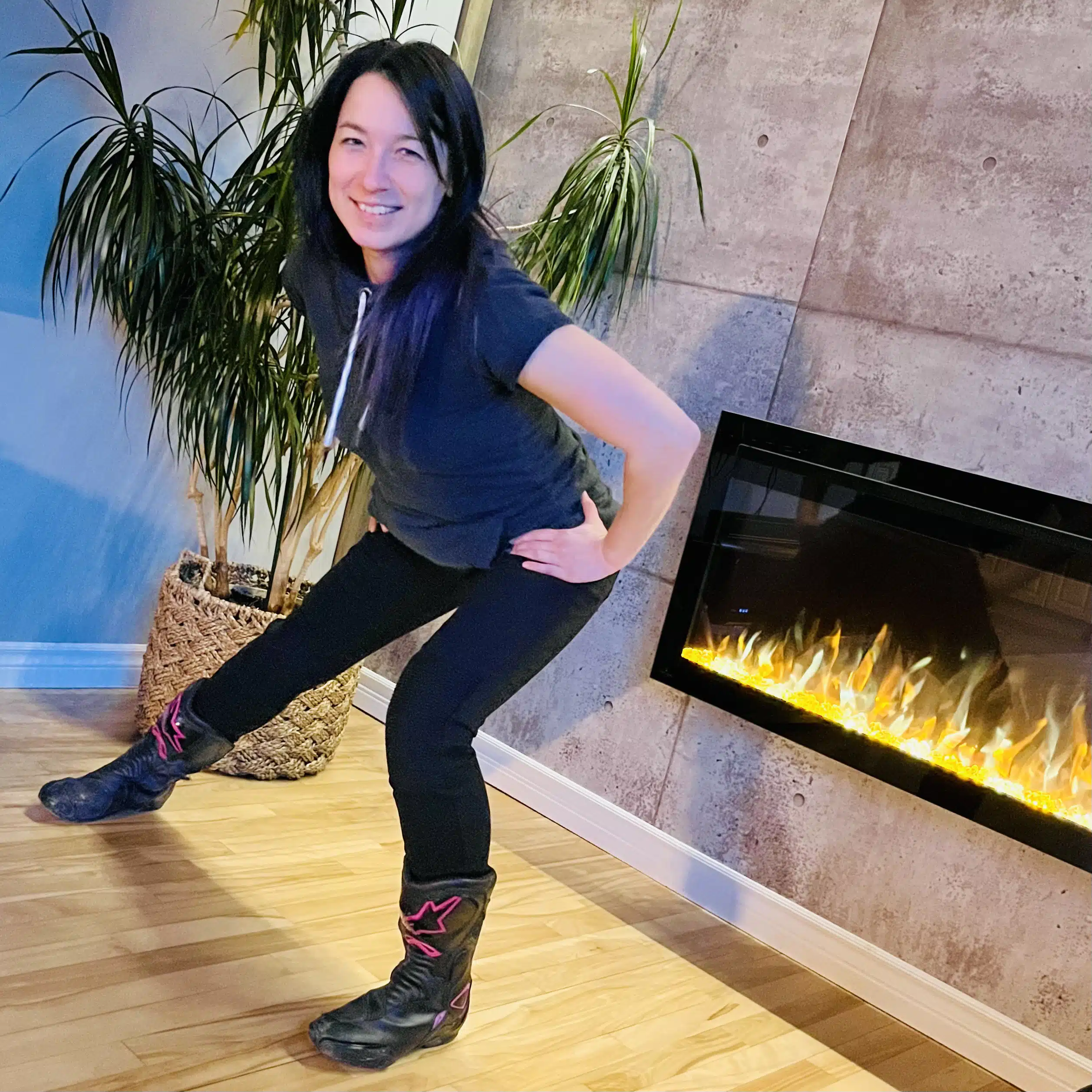
2. THREE (3) EXERCISES FOR THE TRUNK (Back and abs)
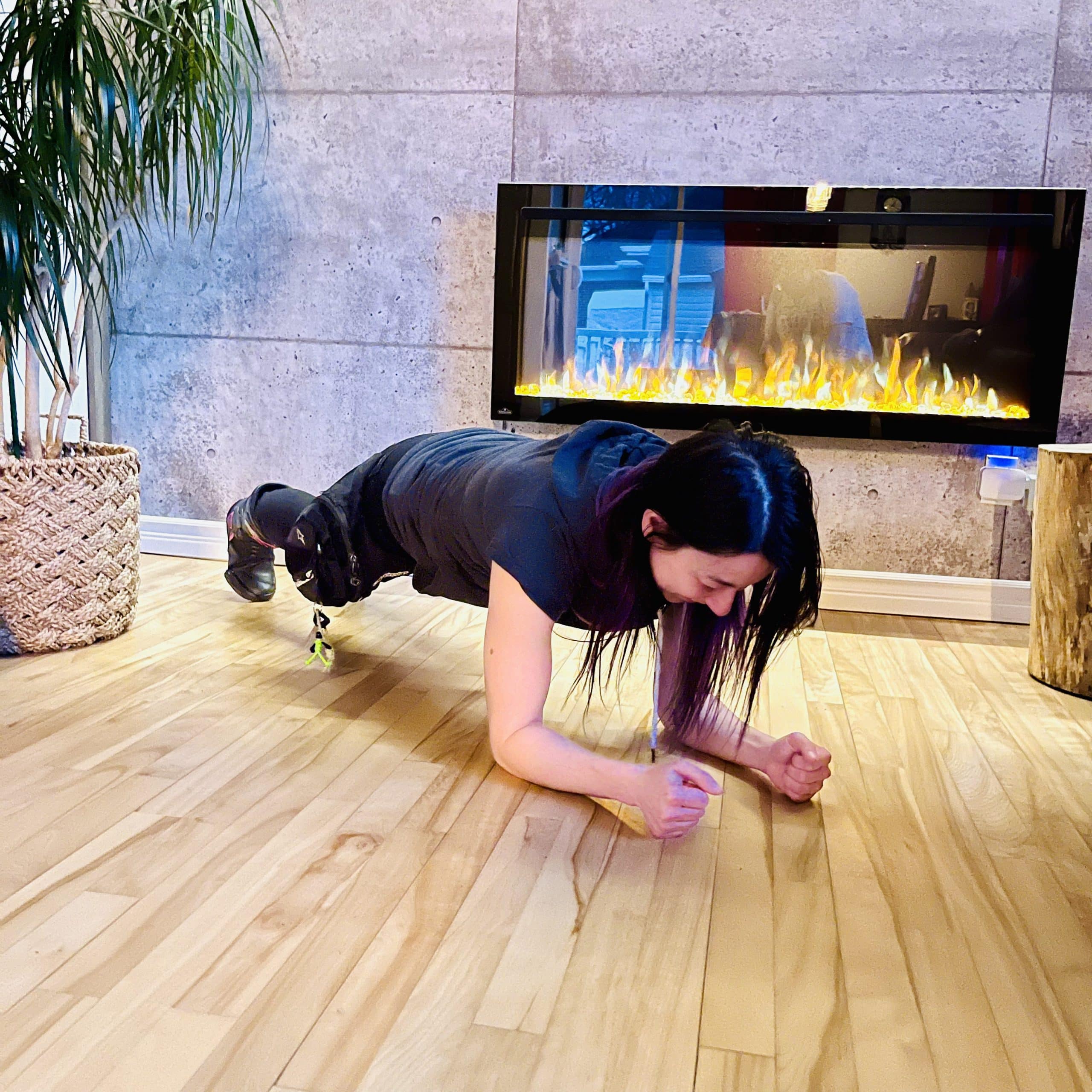
- Plank – great exercise for strengthening the core muscles (back and abdominals). Hold the position for 30 to 60 seconds, repeat 3 times.

- Side plank – the side plank strengthens the oblique muscles and the back muscles. Hold the position for 30 to 60 seconds, repeat 3 times on each side.

- Leg raises – exercise to strengthen the lower abdominal muscles. Do 3 sets of 12 repetitions.
3. TWO (2) EXERCISES FOR SHOULDERS AND ARMS

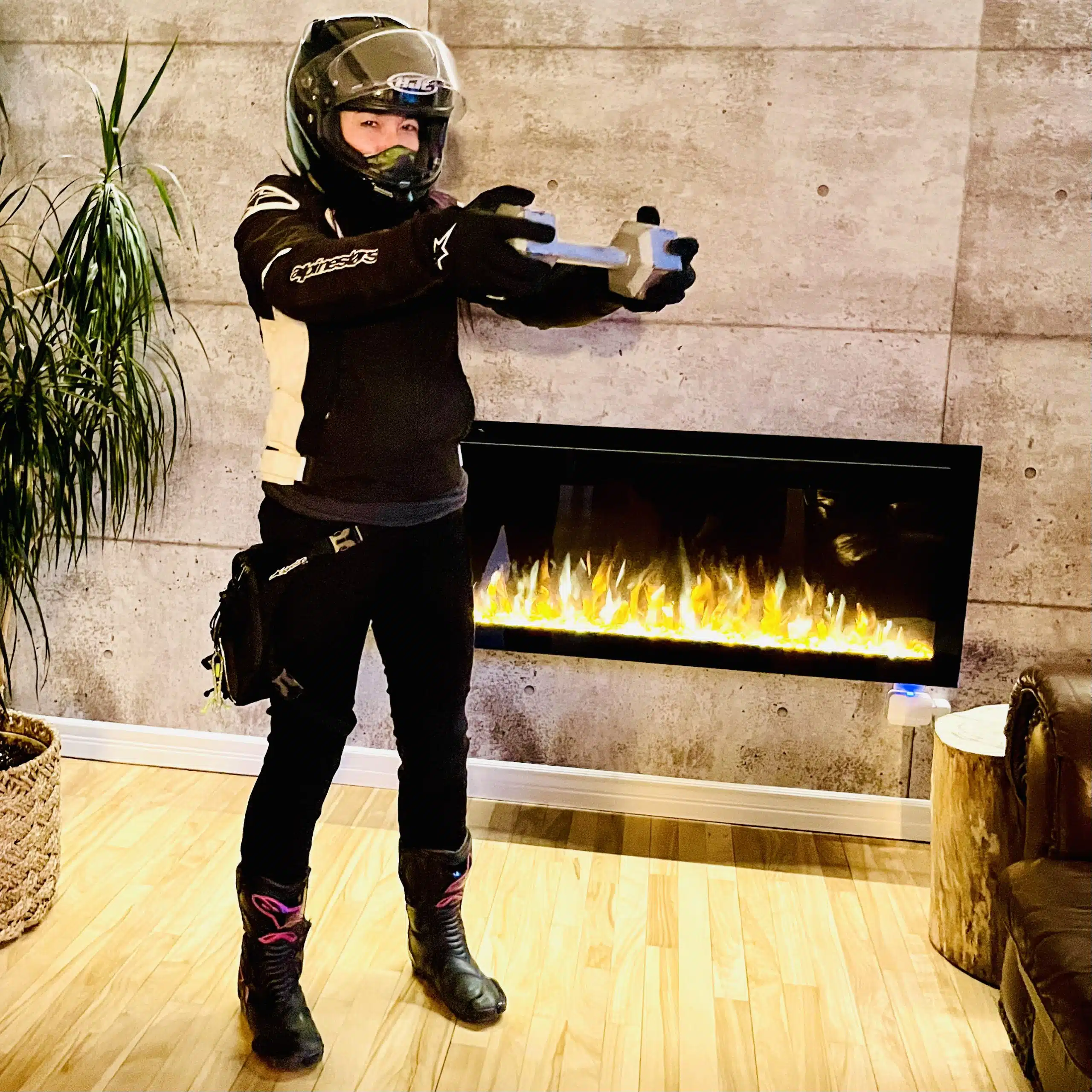
- Lateral raise with trunk tilted forward – to improve posture by engaging the upper back muscles, especially the trapezius and rhomboids. Posture is important on a motorcycle as it can help reduce fatigue and soreness by maintaining a stable and comfortable position on the motorcycle. A strong and balanced back also helps to better absorb road vibrations and shocks.
- Front raises – to strengthen shoulder muscles to better absorb road vibrations and shocks and increase precision in handlebar movements. Do 3 sets of 12 repetitions.
MOBILITY AND STRETCHING
Leg and arm pain can also occur if the pilot does not take regular breaks to stretch and rest their limbs. It is important to note that these pains can vary from one motorcyclist to another, depending on his morphology, his motorcycle and his riding style. Since flexibility helps prevent injuries, prevent muscle fatigue, reduce tension and improve posture, here are some effective stretching suggestions to do on your next ride!
- Quadriceps Stretch – Standing, bend your right knee and grab your right foot with your right hand. Tilt your pelvis slightly forward and hold for 20 to 30 seconds. Repeat for the left side.
- Calf stretch – Standing, hands resting on your motorcycle, 1 foot in front with the knee bent, the other foot behind fully extended with the heel on the ground. Hold for 20-30 seconds then repeat for the left side.
- Back and hamstring stretches – standing, bend your hips, keeping your legs as straight as possible and your hands as close to the floor as possible. Release the neck and shoulders, hold for 20 to 30 seconds, then slowly unroll, vertebra by vertebra, until you return to a standing posture.
- Back mobility – standing or sitting on your bike, tilt the pelvis forward, then back to engage the lumbar vertebrae.
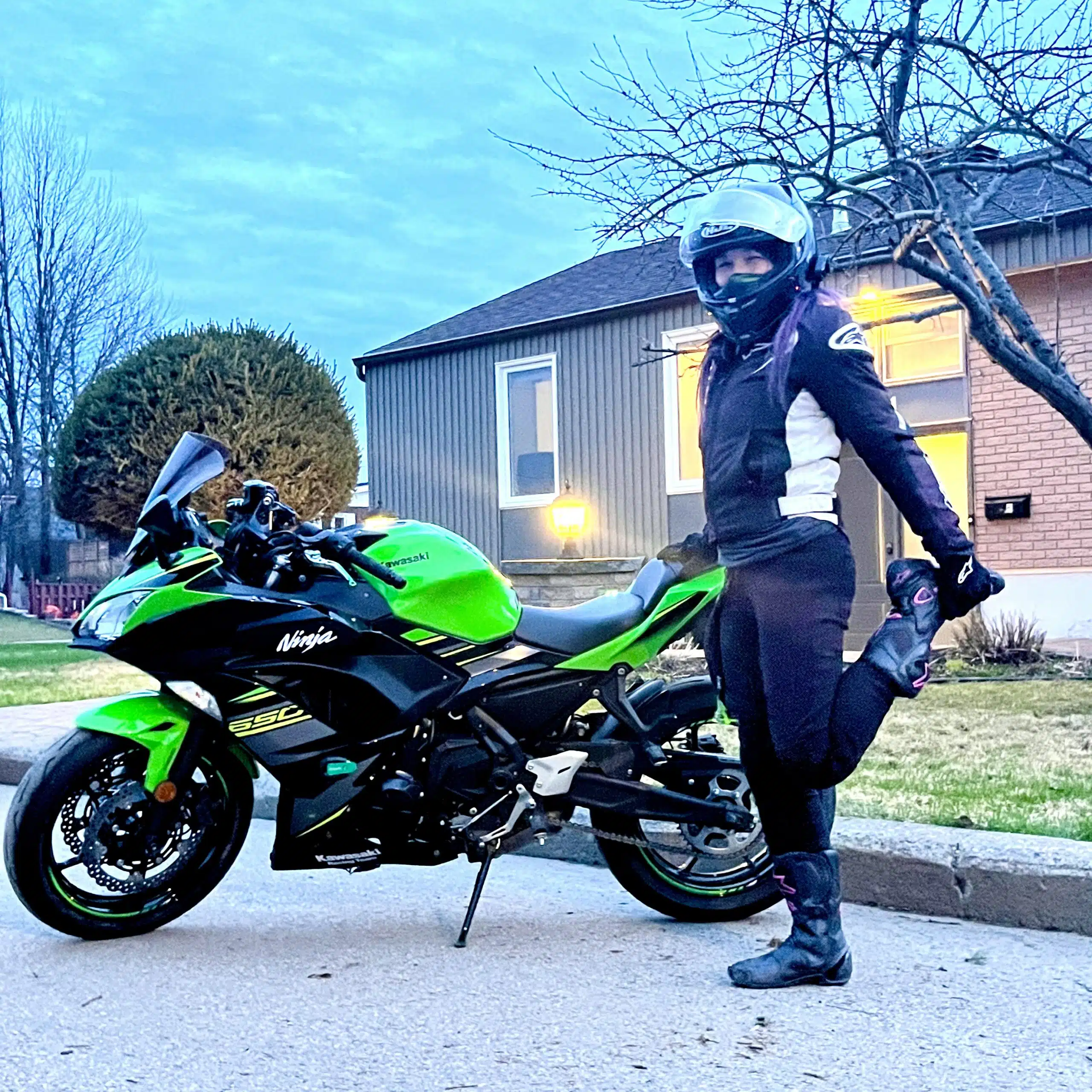


- Oblique stretch – standing, place your hands on your hips and lean slightly to the right until you feel slight tension on your left side. Hold for 20 to 30 seconds before repeating on the other side.
- Wrist flexors and extensors stretch – hold your left hand out in front of you, fingers pointing up. Use your right hand to gently bend the fingers of your left hand downward until you feel a slight tension. Hold the position for 30 seconds, then repeat on the other side.
- Neck mobility – do half rotations from side to side to reduce tension.



Muscle strengthening, stretching and mobility exercises should be tailored to the muscles that are used the most while driving.
Sport bikes can take more leg work, especially if you perform lean angle maneuvers in curves. In this case, it may be beneficial to focus on strengthening exercises for the legs (quadriceps, hamstrings, hip flexors, glutes).
➡The quadriceps and hamstrings are particularly stressed to maintain posture on the motorcycle. The quadriceps keep the knees in a bent position to hold the bike and control the direction, while the hamstrings are used to stabilize the lower body.
➡The adductors and abductors are also important for motorcycle riding, as they help maintain stability in the pelvis and legs. When the bike is tilted, the adductors are used to maintain leg position, while the abductors help stabilize the pelvis.
➡Finally, the calves are used to maintain the position of the feet on the footrests of the motorcycle and to control speed and braking. The calves are also stressed when changing gears, as they are used to operate the gear change pedal.
➡In addition, the muscles of the lumbar and abdominal region are also very stressed on sports bikes, so it is important not to neglect them when preparing muscles.
On the other hand, “cruiser” or “touring” motorcycles can put more strain on the back and neck muscles, as they have to support the rider’s upright posture for long periods of riding. In this case, it may be recommended to focus on strengthening exercises for the back muscles, neck muscles and abdominal muscles.
In short, it is important to take into account your type of motorcycle, your riding style and your strengths and areas for improvement when planning your muscular preparation.
So… ready for summer?
Cathy Lam
Tik Tok: @cathylam.moto
- Disclaimer: It is important to remember to warm up properly before starting each training session and to respect your limits. Also, be sure to consult a medical professional or personal trainer if you have any pre-existing concerns or injuries.
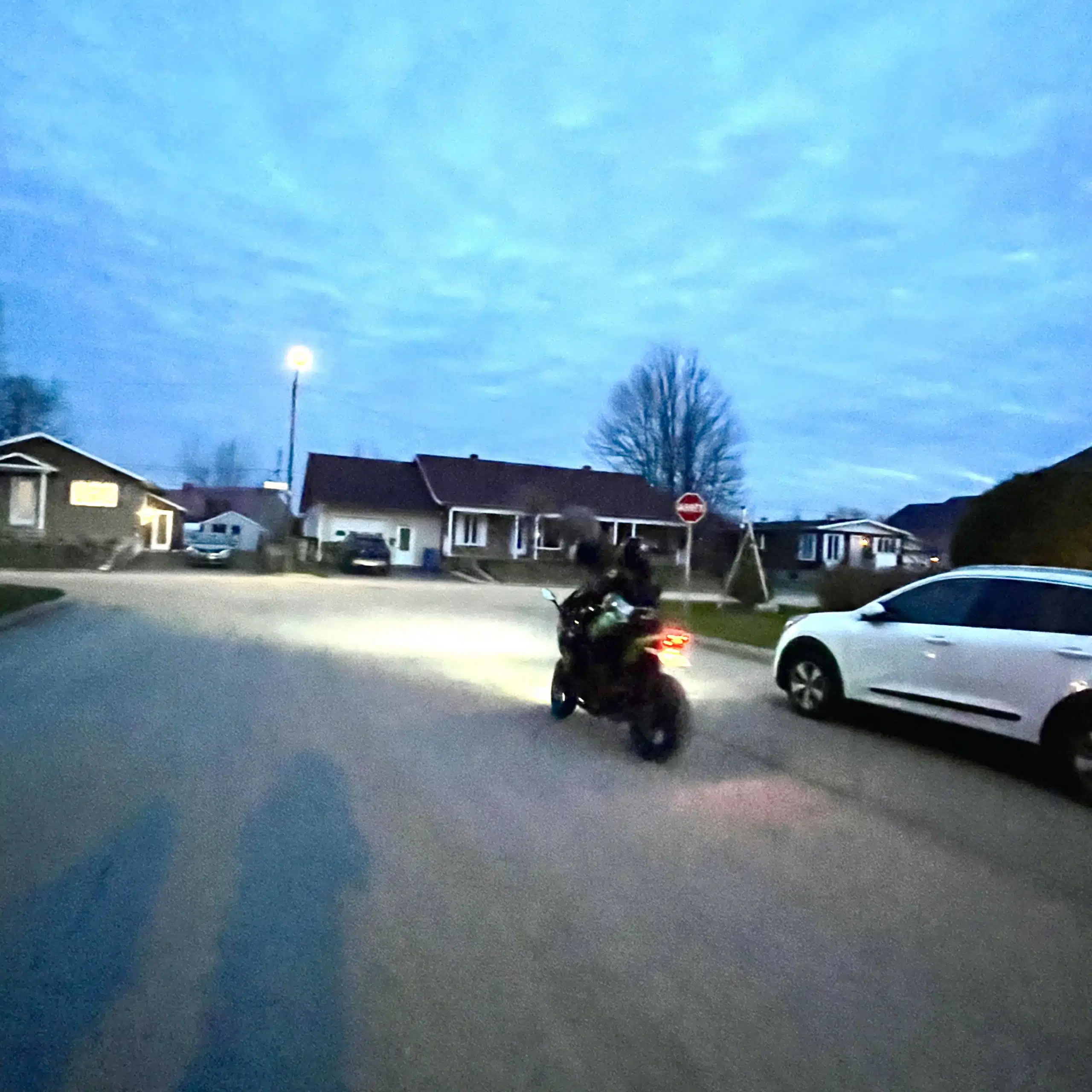
If you want to listen to me talk about this (in French), you can watch episode 27 of the podcast here!



